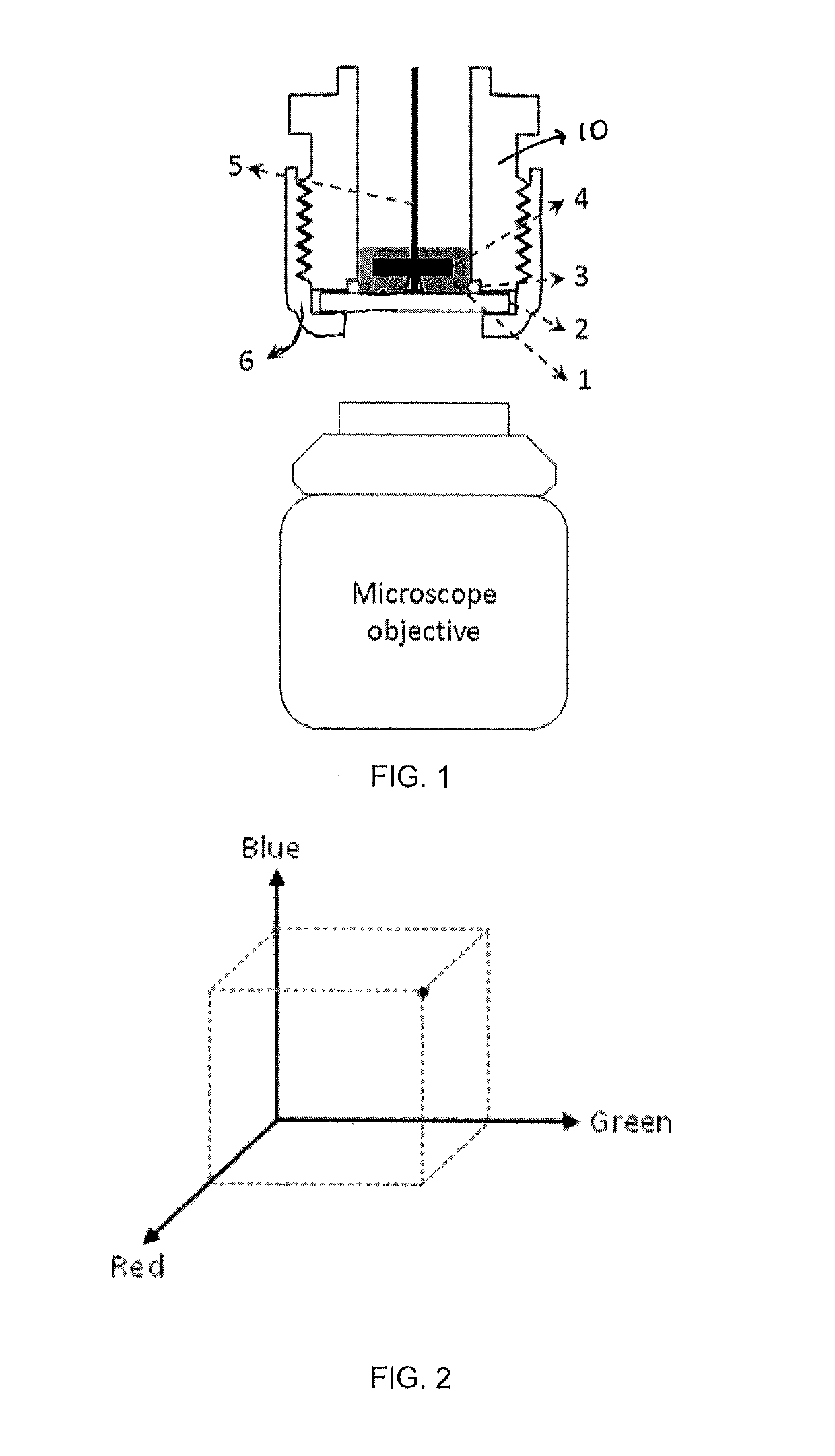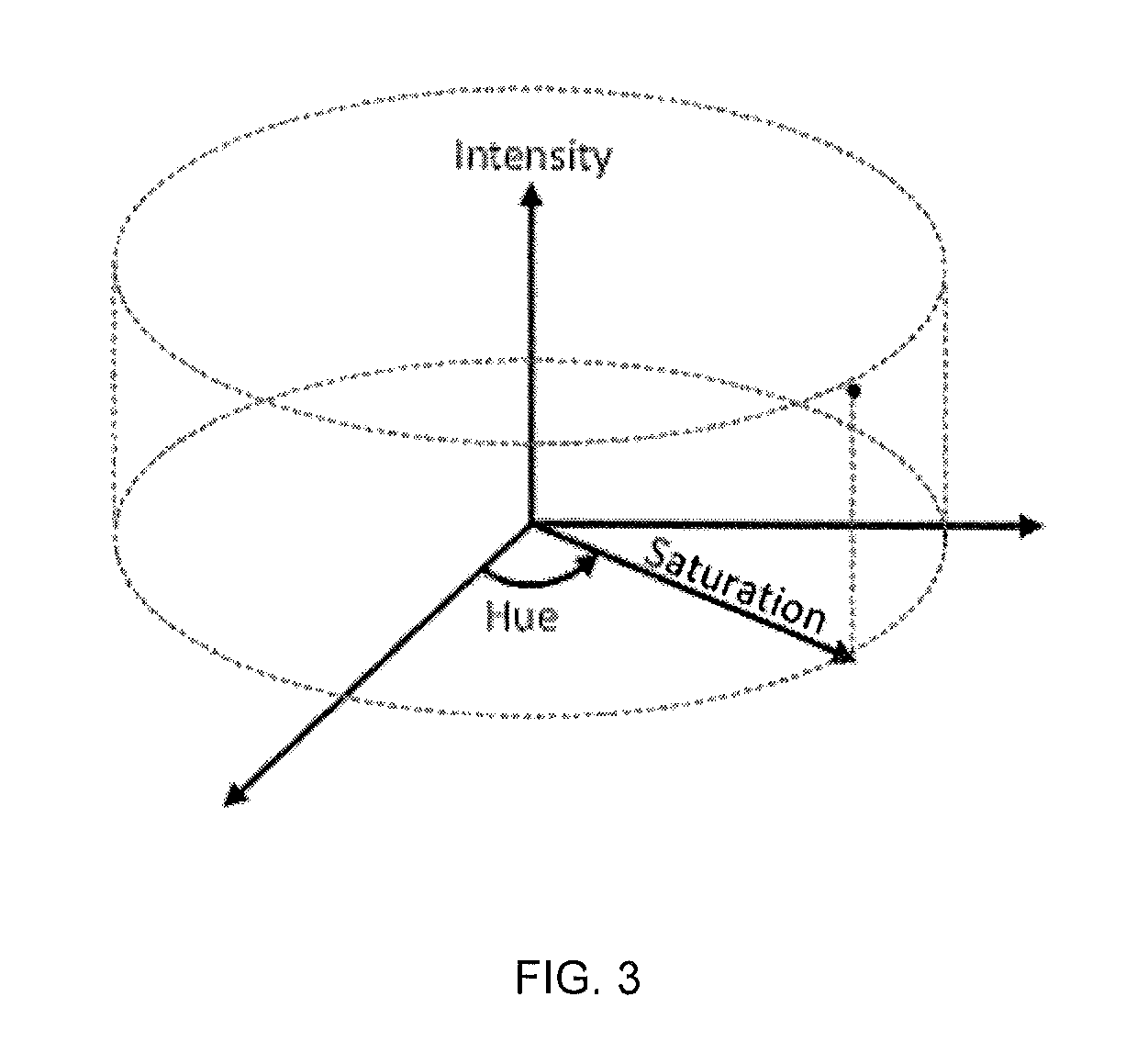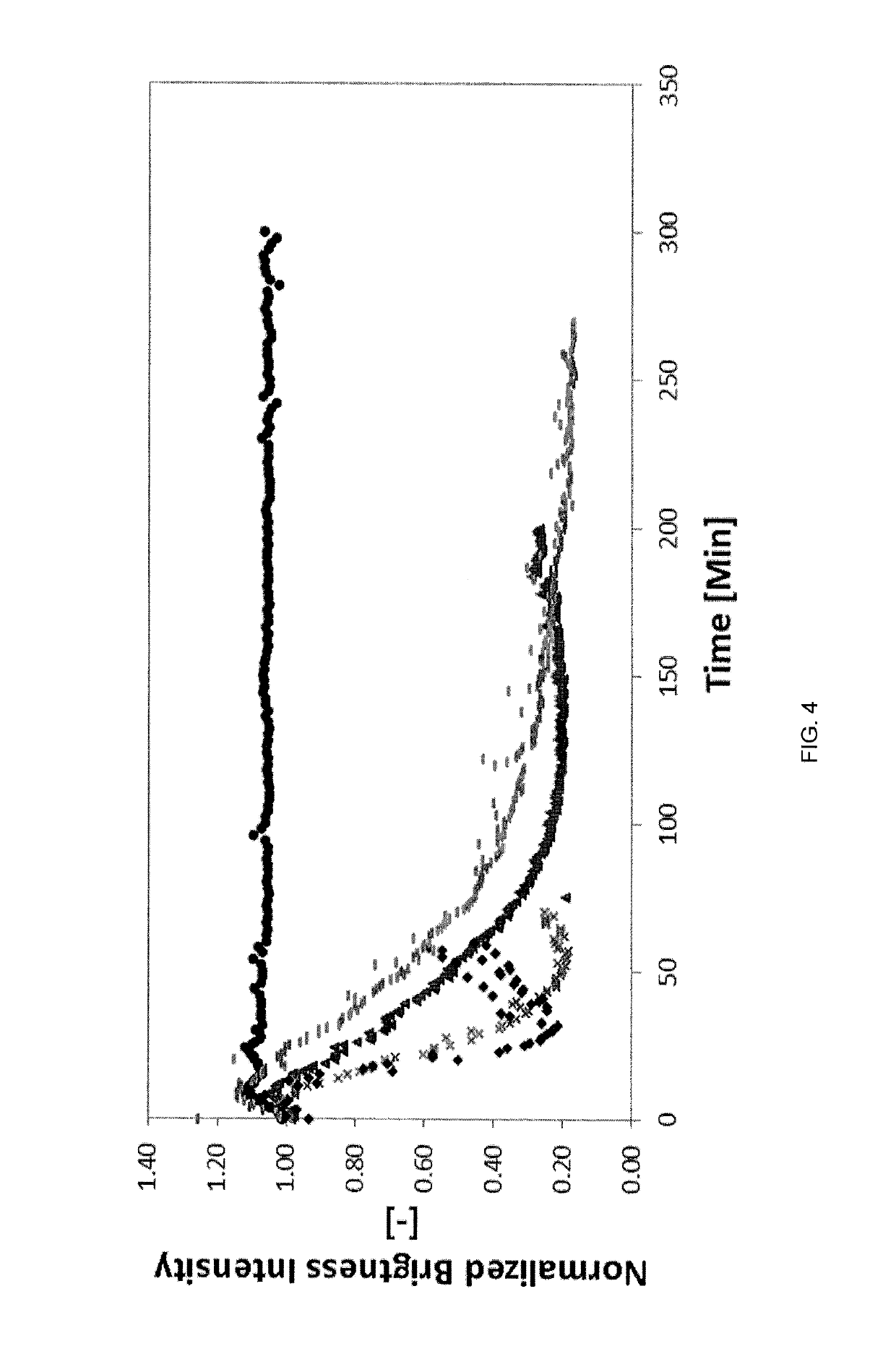In situ analysis of petroleum stability
a technology of stability analysis and petroleum feed, which is applied in the direction of material analysis through optical means, measurement devices, instruments, etc., can solve the problems of high loss of throughput, loss of heat transfer efficiency, and high undesirable phase separation, so as to increase the heterogeneity of the measur
- Summary
- Abstract
- Description
- Claims
- Application Information
AI Technical Summary
Benefits of technology
Problems solved by technology
Method used
Image
Examples
examples
[0075]Exemplary embodiments of the present invention are described to aid in the understanding of the invention, and should not be construed to limit in any way the scope of the invention as defined in the claims which follow thereafter.
[0076]In situ observations of thermal cracking reactions were performed by cross-polarized microscopy on a variety of petroleum feeds (see Table 1 below) at different temperatures. All feeds showed mean similar trends: at first, samples brightened when heated to the setpoint temperature, with negligible change in color. This brightening seemed caused by a growing difference between the refractive index of the feed and that of sapphire with increasing temperature. When the temperature stabilized and thermal cracking processes became prevalent, images of the samples darkened following first-order kinetics specific to each feed. The darkening rates of the micrographs showed good correlation with the conversion of 524+° C. material in the case of Athabas...
PUM
| Property | Measurement | Unit |
|---|---|---|
| temperatures | aaaaa | aaaaa |
| temperatures | aaaaa | aaaaa |
| temperatures | aaaaa | aaaaa |
Abstract
Description
Claims
Application Information
 Login to View More
Login to View More - R&D
- Intellectual Property
- Life Sciences
- Materials
- Tech Scout
- Unparalleled Data Quality
- Higher Quality Content
- 60% Fewer Hallucinations
Browse by: Latest US Patents, China's latest patents, Technical Efficacy Thesaurus, Application Domain, Technology Topic, Popular Technical Reports.
© 2025 PatSnap. All rights reserved.Legal|Privacy policy|Modern Slavery Act Transparency Statement|Sitemap|About US| Contact US: help@patsnap.com



